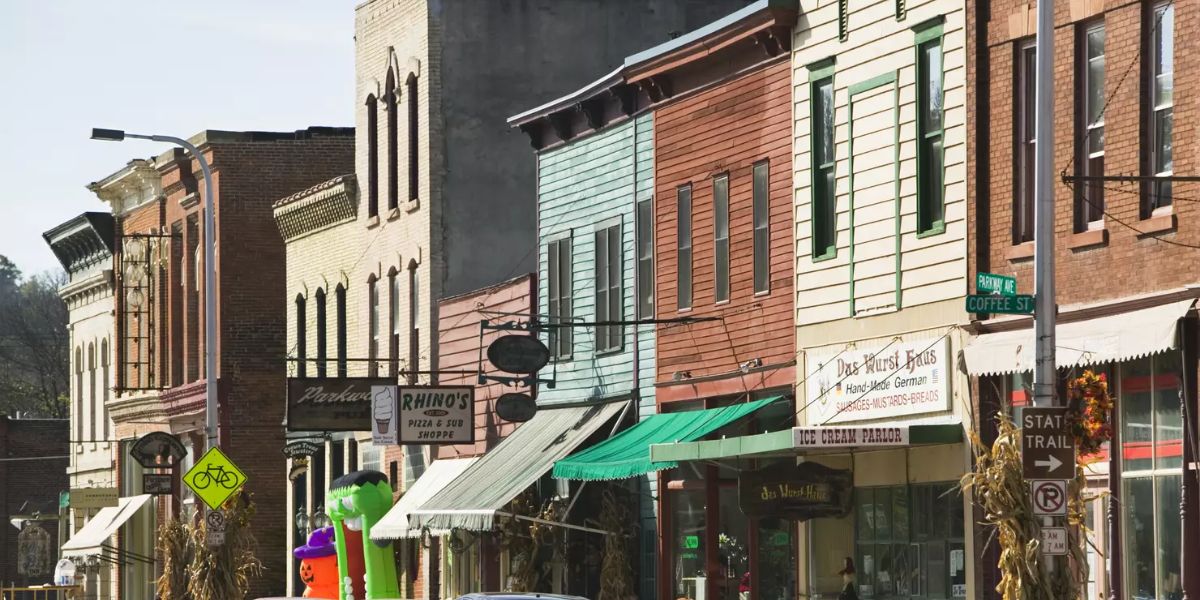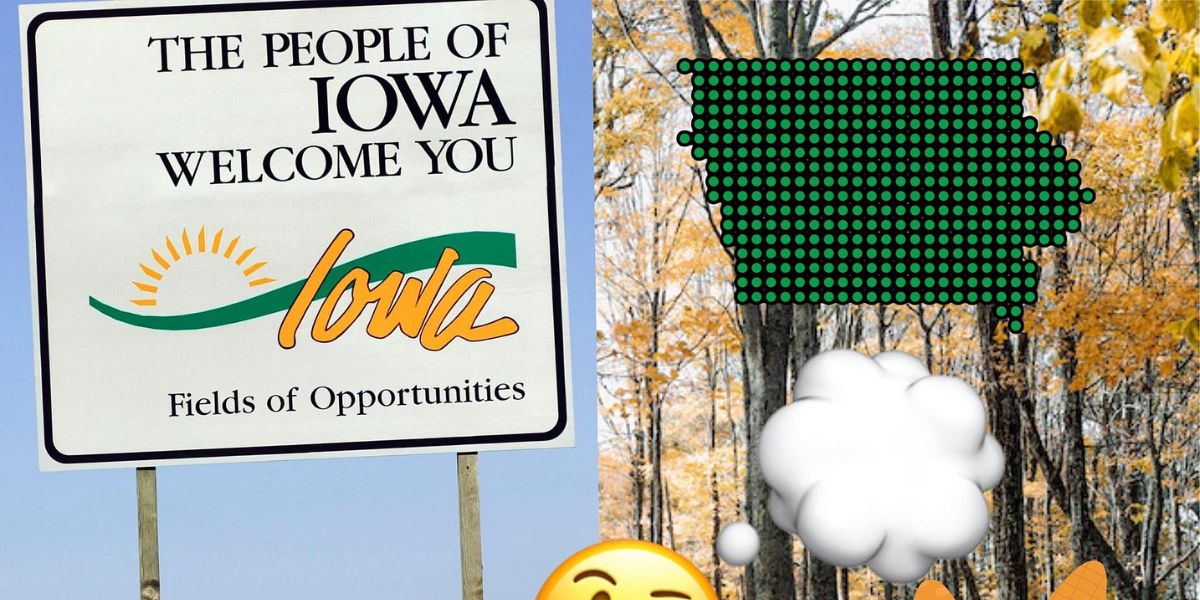In the heart of Iowa, among its rolling plains and picturesque communities, relics of a past are being eaten up by nature’s unrelenting grasp. These abandoned locations, once thriving hubs of activity and community, now serve as disturbing reminders of the passage of time and the natural world’s resilience. From abandoned mining towns to creepy jails and dilapidated schools, each area offers a story of growth, decline, and the unstoppable march of nature reclaiming what was once human-built.
As ivy crawls over aged buildings and trees reclaim deserted streets, these sites expose layers of Iowa’s past, including industry, community, and human endeavor. Join us on a tour through seven abandoned locations where echoes of the past mingle with the rustling of leaves, reminding us of the fleeting nature of human creations against the backdrop of Iowa’s peaceful countryside.
1. The Squirrel Cage Jail in Council Bluffs
Council Bluffs’ Squirrel Cage Jail is a unique example of penal construction. Built-in 1885, this circular jail held criminals in a spinning machinery designed to reduce human touch. The jail’s unusual design grew outmoded over time, and it closed in 1969. Today, the structure sits in eerie abandonment, surrounded by overgrown flora that has reclaimed the metal bars and concrete walls.
2. The Hawkeye Hollow Ghost Town in Allamakee County
Hawkeye Hollow Ghost Town, located in the undulating hills of Allamakee County, was once a thriving community in the late nineteenth century. Founded at the height of the mining boom, the town had a general shop, a post office, and a few houses. However, when mining activity decreased, so did the town. Hawkeye Hollow’s vestiges are slowly being swallowed up by the surrounding woodland, with old structures and rusting mining equipment serving as mute reminders of its history.
3. The Dunning’s Spring Park Pavilion in Decorah
The Pavilion, located in Decorah’s Dunning’s Spring Park, was previously used to host community events and picnics. Built in the early twentieth century, the Pavilion has fallen into disrepair over the years, with its wooden frame corroded and overgrown with ivy and moss. Nature has converted this once-vibrant social hub into a tranquil yet somber reminder of time’s passage.
4. The Joy Hollow Coal Mining Town in Monroe County
Joy Hollow, a former coal mining hamlet in Monroe County, previously housed hundreds of miners and their families. In its heyday, the town was bustling with schools, stores, and community facilities. However, as coal mining declined, residents withdrew, leaving abandoned buildings and overgrown streets. Today, Joy Hollow stands as a haunting reminder of Iowa’s industrial past, with nature reclaiming its abandoned homes and roads.
Explore These 20 Hidden Iowa Facts That Only Locals Understand
5. The Green Castle School in Marshall County
Nestled in Marshall County’s rural settings, the Green Castle School was once a pillar of education for local youngsters. This one-room schoolhouse, built in the late nineteenth century, served generations of students before closing in the mid-twentieth century. The Green Castle Schoolhouse now sits in calm desolation, surrounded by meadows and forests, with shattered windows and aged wooden walls from time and neglect.
6. Fort Des Moines Provisional Army Officer Training School, Des Moines.
During World War I, the Fort Des Moines Provisional Army Officer Teaching School was instrumental in teaching African American officers—the first of its type in the United States. Following the war, the facility remained a military installation until its closure in the mid-twentieth century. Today, several structures stand abandoned and overgrown, acting as a melancholy reminder of their historical value and the passage of time.
Discover the Top Seven Cheapest Places to Live in Florida With Rich Historical Sites
7. Church of the Immaculate Conception, Bancroft
The Church of the Immaculate Conception in Bancroft was once a beacon of faith and community. Built-in the late nineteenth century by German immigrants, the church served generations of worshippers before closing in the early 2000s owing to decreased attendance. Its ancient exterior and collapsing walls are now entangled with vines and encircled by a cemetery, which has reclaimed its serene surroundings.
Conclusion
Amidst Iowa’s serene landscapes and historic communities, abandoned antiquities serve as heartbreaking reminders of bygone eras reclaimed by nature. These structures, ranging from mining towns to schools and churches, reverberate with historical whispers, as ivy-clad walls and overgrown paths bore witness to the fleeting legacy of human achievements against Iowa’s beautiful setting.




